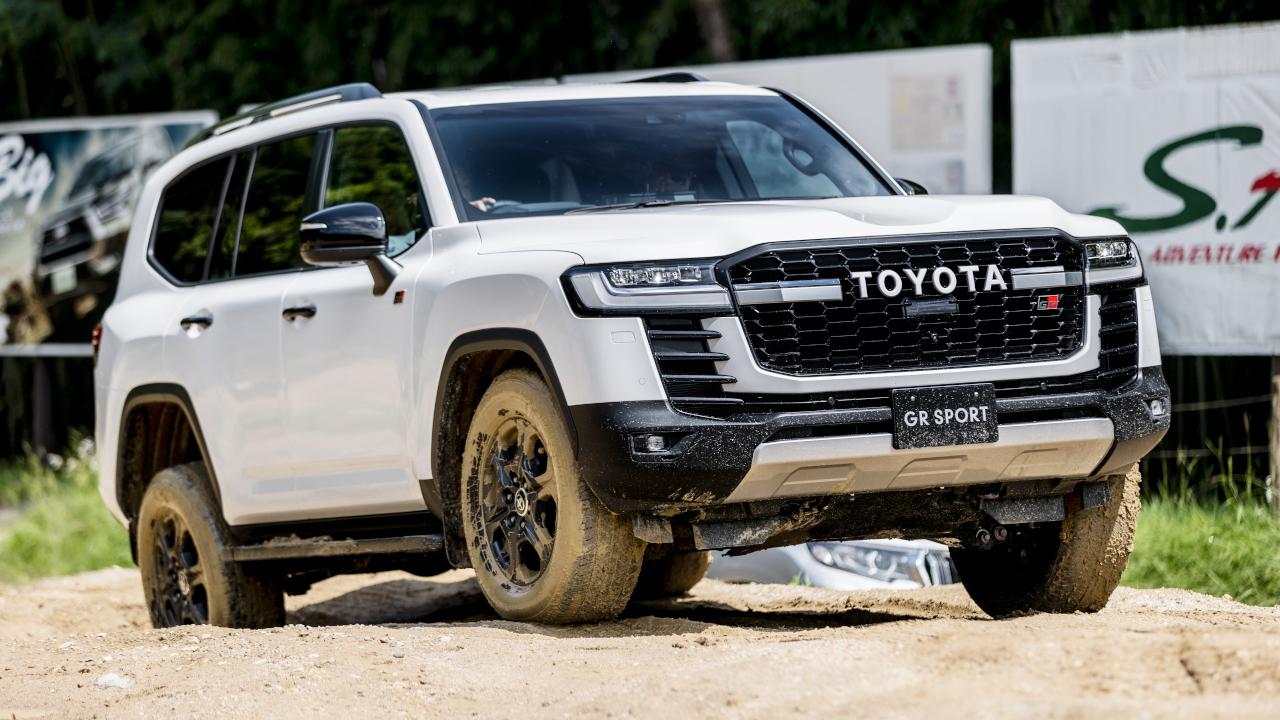
Through a test drive in a full-fledged off-road driving course, the test driver and chief engineer for the new Land Cruiser explain how the 300 Series has evolved to ensure its unwavering concept of "go anywhere & everywhere and come back alive & safe".

Comparing new and old models off-road
The latest Land Cruiser, the 300 Series, made its debut in Japan on August 2, 2021. This marked the first full model change in 14 years, since the release of its predecessor, the 200 Series, in 2007.
To find out more about this evolution, Toyota Times visited the Sanage Adventure Field, a multipurpose outdoor attraction in Toyota City, Aichi Prefecture, featuring a full-fledged off-road driving course, and spoke with some of the key personnel involved in the 300 Series’ development.
Awaiting Toyota Times at the Sanage Adventure Field that day was Chief Engineer Takami Yokoo, joined by two test drivers: Kazuyuki Ueno of the Vehicle Engineering Development Division, an expert on off-road drivability who has been involved in Land Cruiser development and vehicle evaluation for over 20 years, and Akihiro Osaka of Advanced Technical Skills Institute Division, a specialist in circuit and on-road drivability who competes in the 24 Hours of Nürburgring endurance race alongside Morizo (aka Akio Toyoda).
Rounding off the four-man group was Akira Miura, a Toyota Auto Body employee and rally driver who has been racing in the Dakar Rally’s production vehicle class for nearly 15 years, leading the Land Cruiser to numerous victories.
How have the core values passed down through successive Land Cruiser generations – “go anywhere and everywhere and come back alive and safe”, “reliability, durability, and drivability on rough terrain” – evolved to create the driving experience of the latest series?
Finding this out firsthand while also serving as the session’s interviewer was racing driver Juichi Wakisaka, a three-time Super GT champion and TOYOTA GAZOO Racing ambassador with extensive Nürburgring experience.

Heavy rainfall the day before had made course conditions far from ideal.
“Driving both cars will make the differences clear, so let’s start there,” says Yokoo.
At Yokoo’s suggestion, Wakisaka first slid himself into the driver's seat of the previous generation Land Cruiser 200 Series, joined by Ueno in the passenger seat, with Yokoo and Miura riding in the rear. After checking course conditions the first time around, the group then switched to a new Land Cruiser GR Sport with black and red interior.
Combining off-road drivability with a natural on-road feel
The Sanage Adventure Field course recreates various types of off-road surfaces. Even though most parts were muddy and slippery on the day, the track proved no challenge for new and old Land Cruisers alike.
And yet, Wakisaka's facial expression changed visibly after switching to the new Land Cruiser GR Sport. He was beaming, clearly relaxed, no longer bracing for a body bounce that could come at any moment on the relentlessly rugged road.
Wakisaka
The steering is nimble, with none of the kickback that occurs when it gets caught on uneven surfaces. In terms of ride comfort, you don’t get that sudden upward thrust. The traction itself has also clearly improved, with all four wheels kicking out the dirt.

Even when descending a steep hill with ruts and bumps, with Crawl Control turned on, s Land Cruiser 300’s suspension has sufficient stroke to maintain contact with the ground.
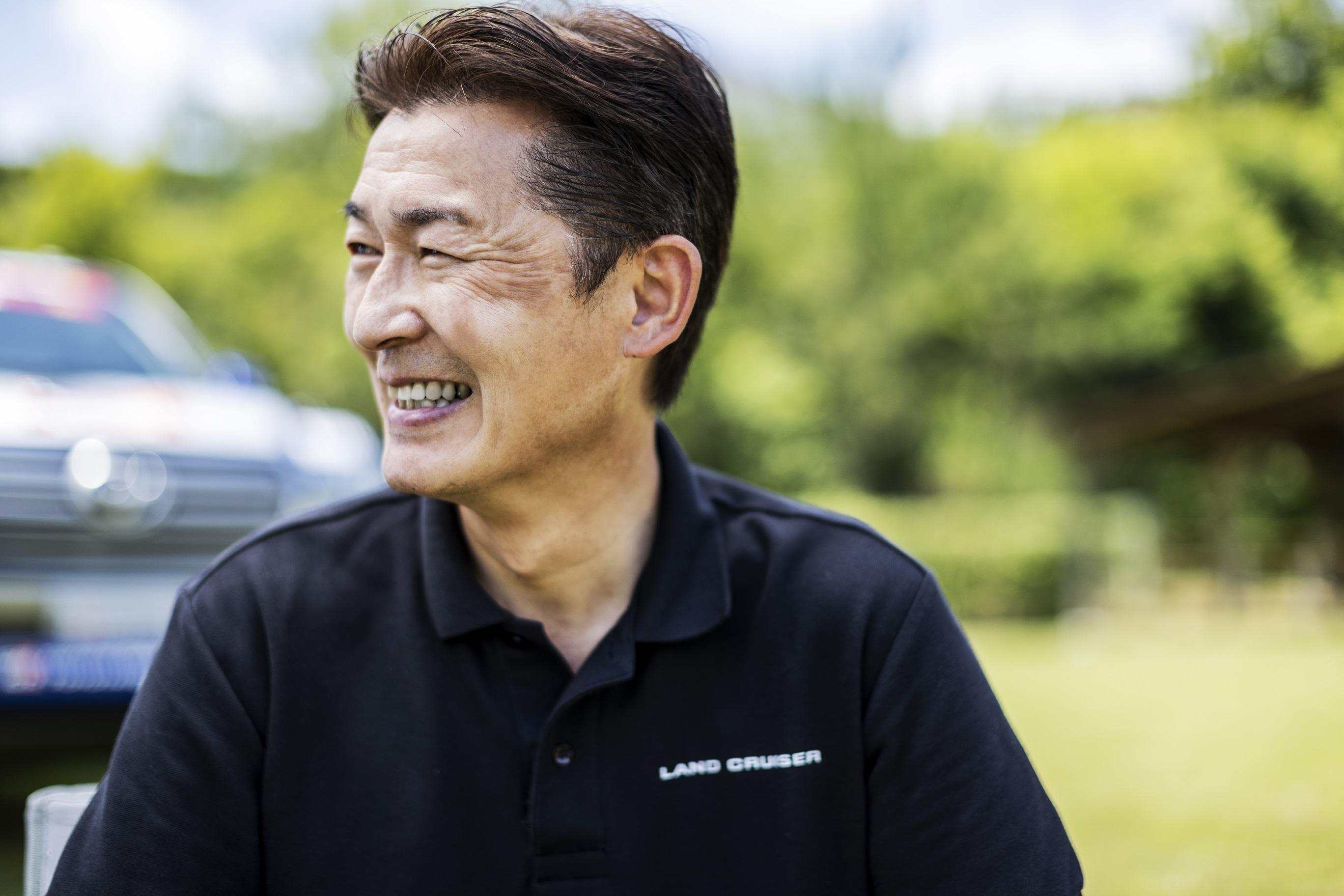
Ueno
When the driver applies the brakes, the left and right tires brake equally, but Crawl Control regulates the braking force on each of the four wheels independently to maintain the car's stability and prevent sideslipping on downhill runs. The driver can concentrate on controlling the steering without pressing the gas pedal or brake pedal.
Even on a rocky course that mimics a scree slope, the 300 Series experiences noticeably less wheel slipping. The passengers’ heads, which had bounced in all directions during the 200 Series run, are unmistakably more settled, and the car manages to pick up speed even over bumpy sections.
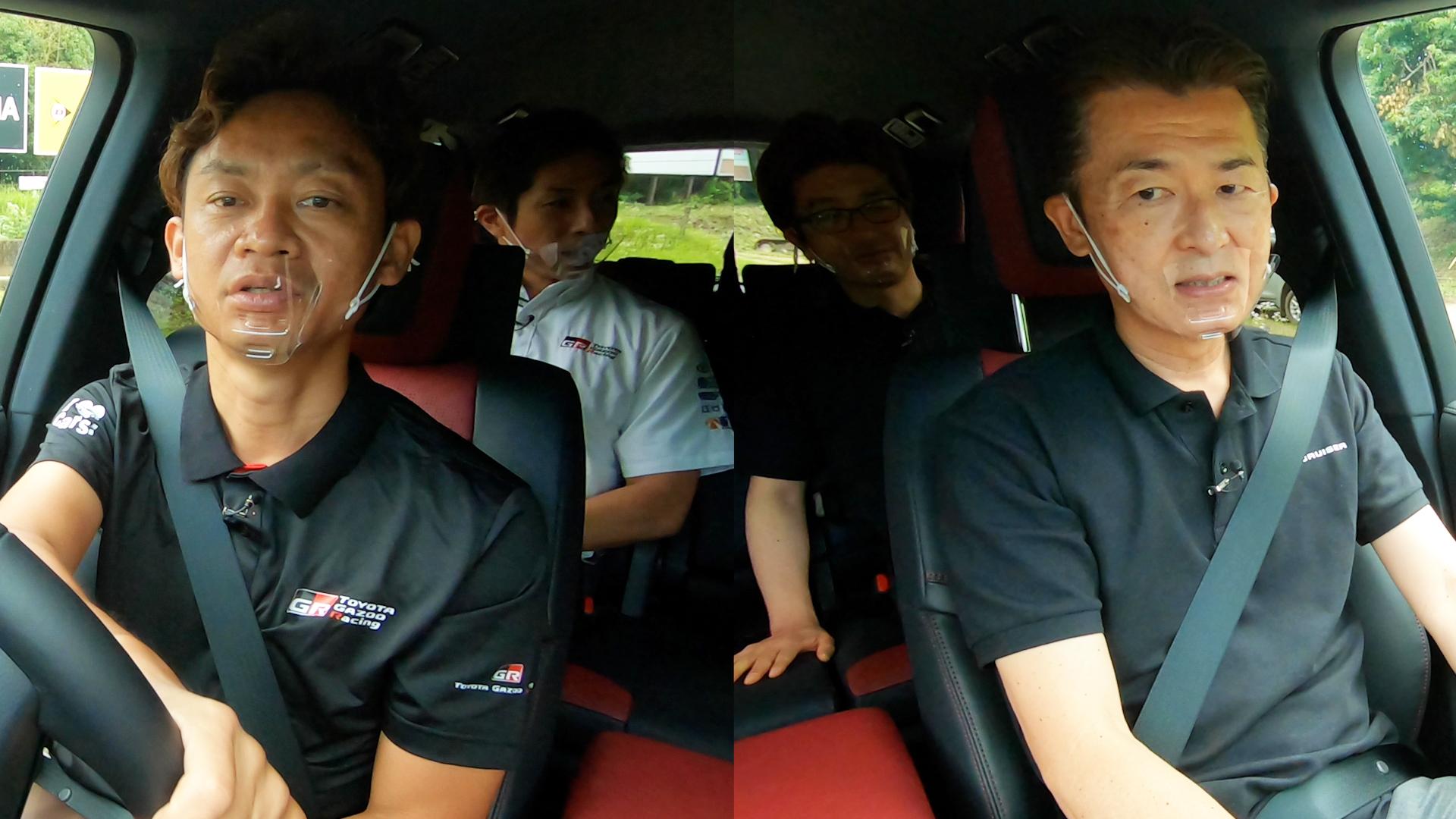
Ueno
We call that the ‘head toss’, the strong impact that shakes your head side to side in rough off-road conditions. Of course, it’s not too bad in the 200 Series either, but the new Land Cruiser 300 Series is even better at keeping all four wheels in contact with the ground. Because we tend to feel a large impact when tires lose contact and then return to the surface, keeping wheels on the ground lessens those shocks.
In taking on the first full model change in fourteen years, chief engineer Yokoo set out to “match or surpass the previous model” by ensuring that the 300 Series was not inferior in any aspect. At the same time, he set a new goal of making the car easy to drive, based on his experience piloting the 200 Series across Australia as part of the Five Continents Drive.
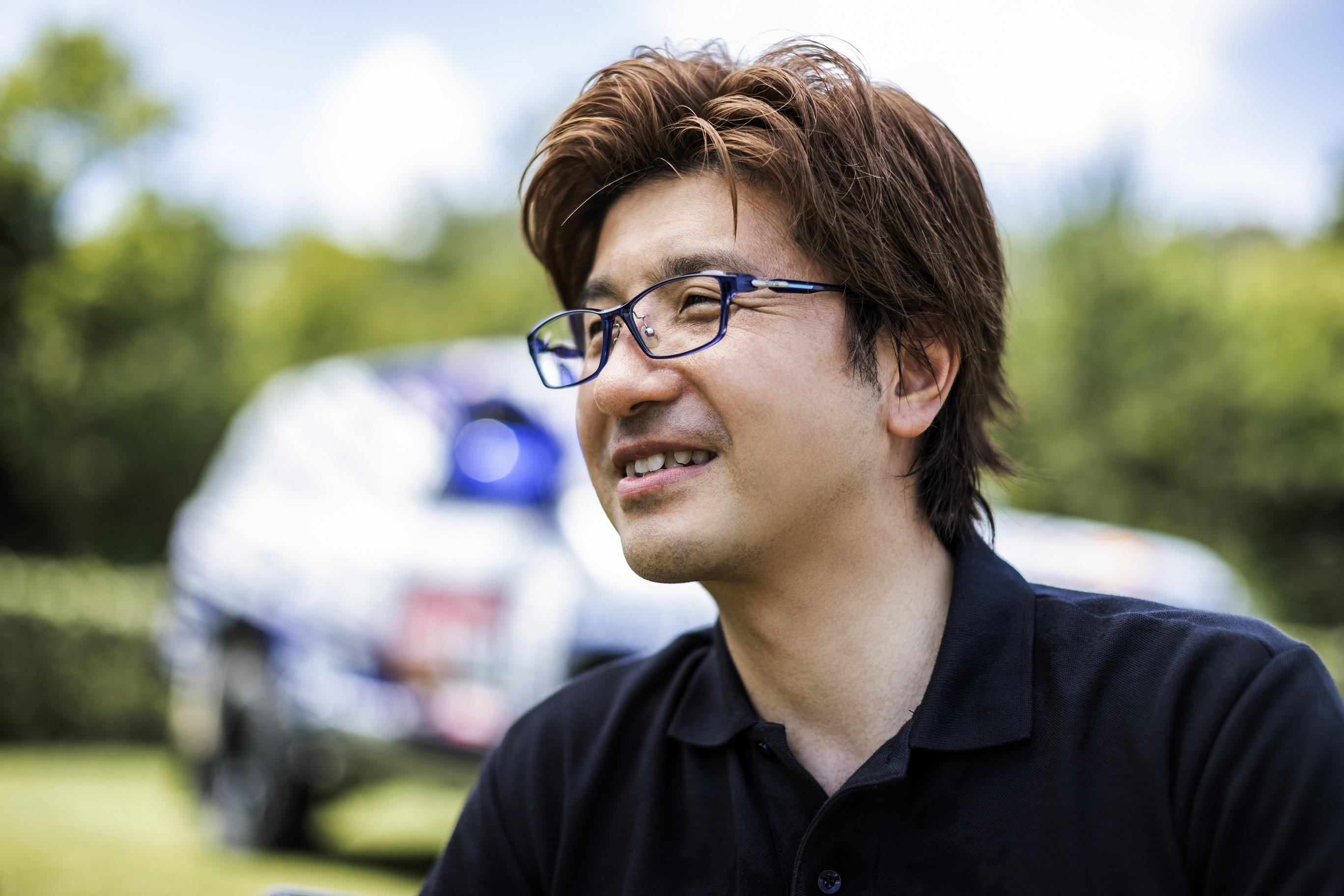
Yokoo
Overseas, many users drive long distances, even off-road. Reducing driver fatigue directly increases the chance of them coming back alive and safe.
“Roads train people, and people make cars”. This development philosophy is a long-standing Land Cruiser tradition. Miura had raced the 200 Series on the ultimate stage, the Dakar Rally, regarded as the world’s most grueling rally event. Yet surprisingly, he had not test-driven the 300 Series off-road until this day.
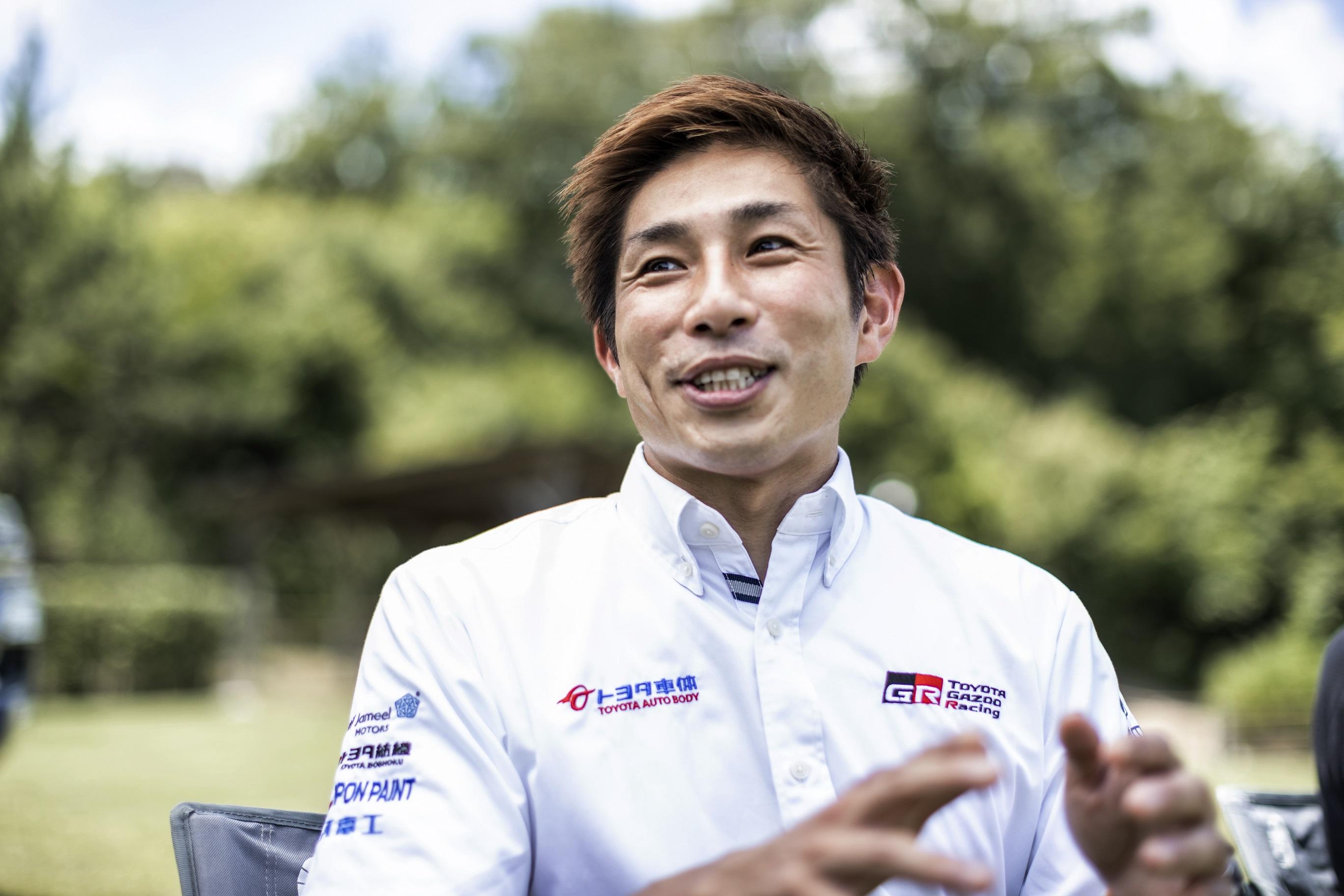
Miura
Compared to the intense environment going by outside the window, the swaying you actually feel inside the car is almost impossibly soft. The 200 Series is also an excellent off-road vehicle, but the 300 Series is on another level. It holds the road even better, which means the tires stay on the ground longer.
When the tires are up in the air, all a driver can do is wait for them to return to the ground. What if we make it into a rally car? I think it would be even stronger.
This is the kind of progress that can be felt directly when gripping the steering wheel. The evolution of the Land Cruiser 300 Series is best understood by taking the car off-road and experiencing the difference firsthand. Having been responsible for the car’s on-road feel, however, Osaka had this to add.
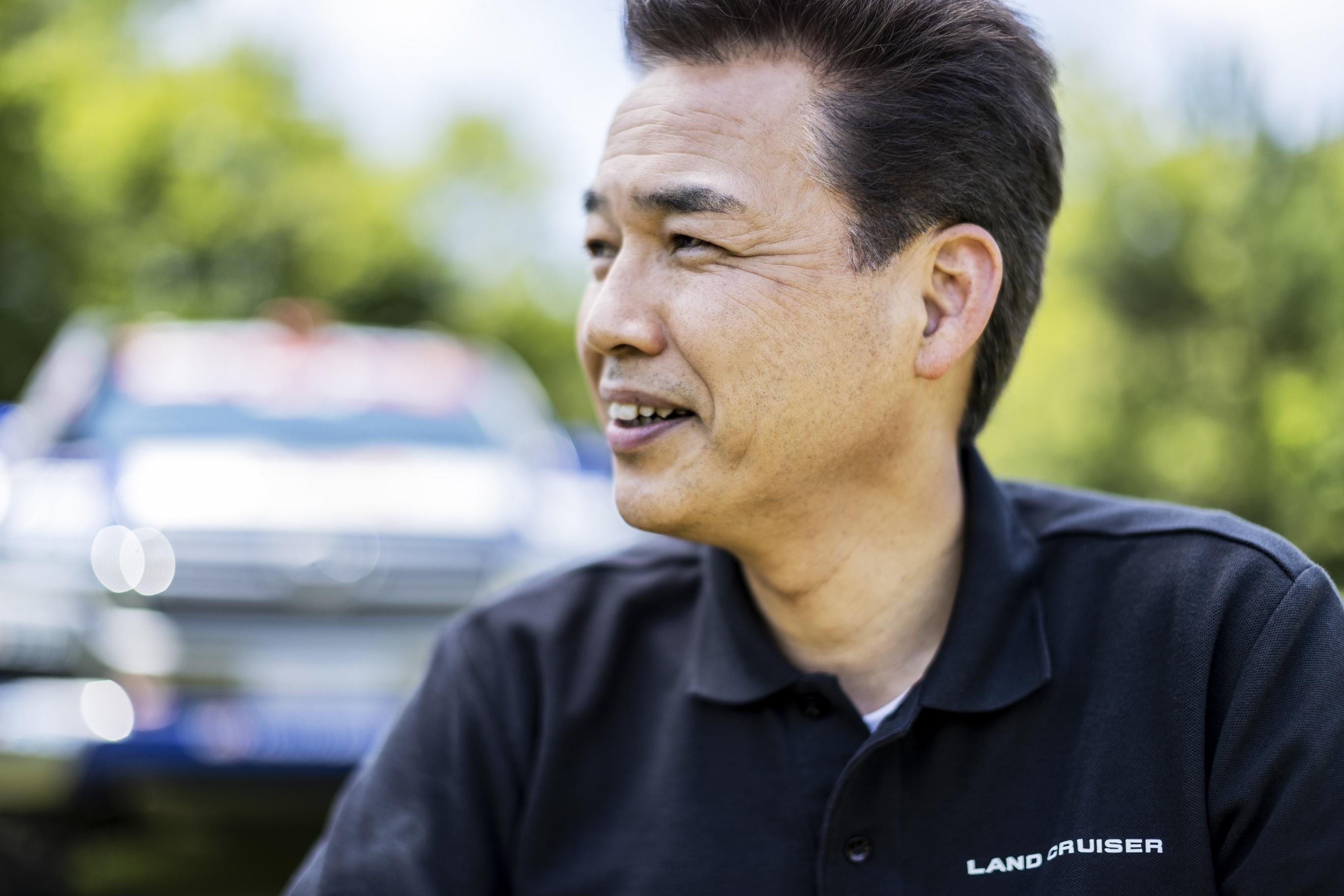
Osaka
The keyword is ‘ease of driving’. This was the clue to combining the Land Cruiser’s high level of reliability, durability, and drivability on rough terrain, which had been built up thanks to our customers, with what our on-road development staff call a ‘natural feel’. Using new technology, I believe we were able to achieve both off-road performance and a natural on-road driving feel.
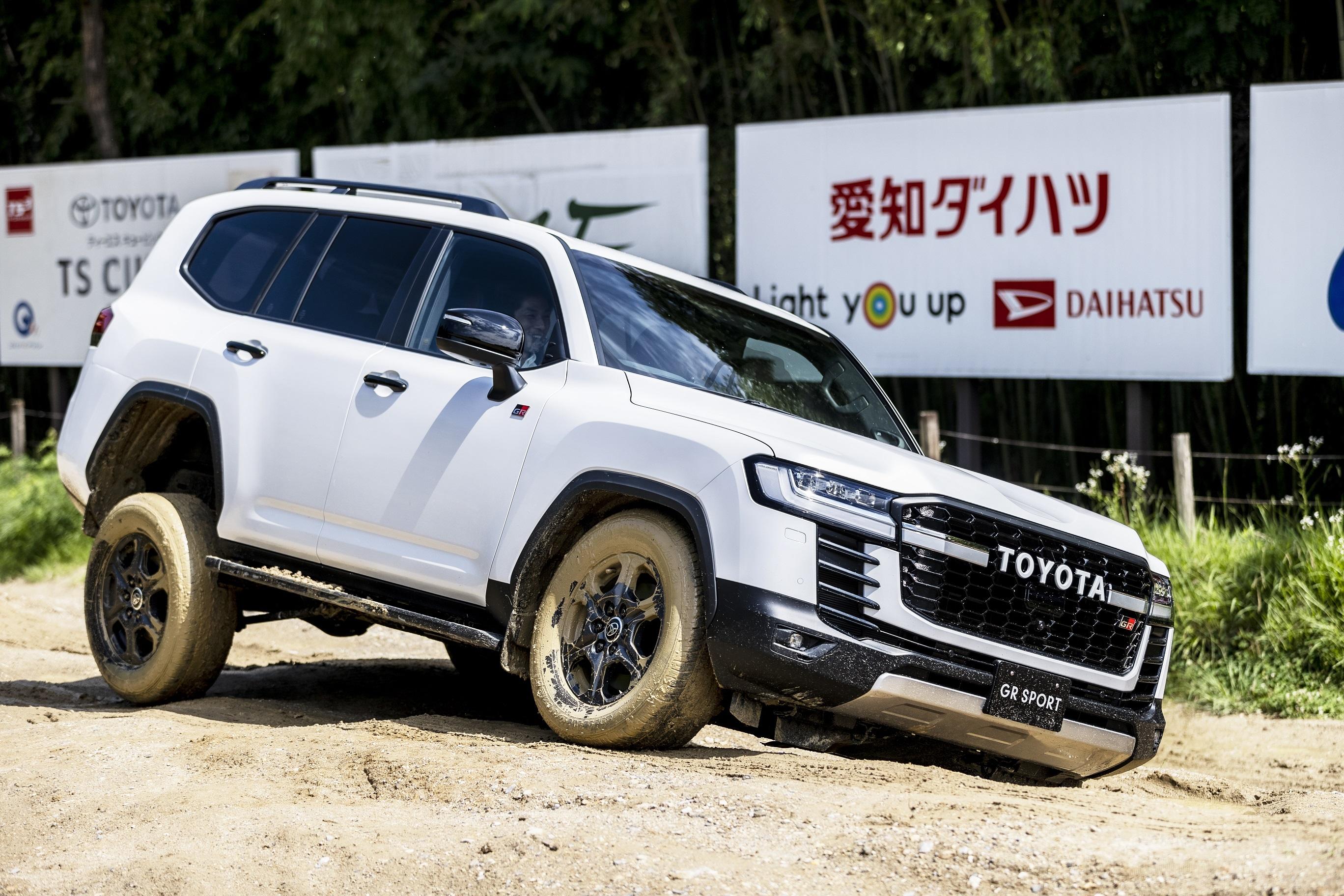
With Juichi Wakisaka as moderator, Part 2 features a discussion between chief engineer Yokoo, test drivers Ueno and Osaka, and Miura, whose Dakar Rally experience provided valuable feedback for the 300 Series’ development. Together, they delve into the evolution of the new Land Cruiser 300 Series. (Continues in Part 2)

